How We Get Kids to Read Hard Nonfiction
A MiddleWeb Blog
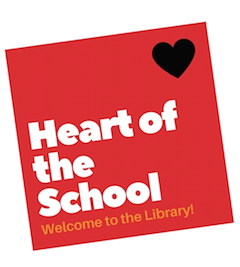 Some years back when I was the librarian at my school, we received a donation of a set of nonfiction books about animals.
Some years back when I was the librarian at my school, we received a donation of a set of nonfiction books about animals.
They were rich with connected text and pictures but they also had lots of the fancy text features that make linear reading challenging for many students.
This was really complex stuff – the books were hard! As I browsed through them, I said to another teacher, “Well, these look like they won’t get much check-out here…they’re too hard. I’ll send them up to the high school.”
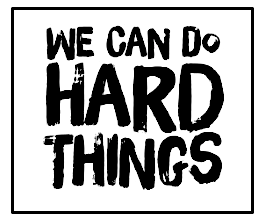
I did that and what happened was, the books soared to the top of the most checked-out books list! The kids loved them!
The experience helped me to think about how I introduced and taught students to read challenging nonfiction texts and how I could motivate them to read a lot more of them!
It also reminded me to never underestimate the kiddos I serve. No matter how high the bar, they will strive to reach it.
Why Nonfiction?
Reading nonfiction well is an important skill. No matter what the future brings our students, one thing is for sure: it will bring nonfiction text. In school, career, and general daily life, there will always be a need to read nonfiction proficiently.
Nonfiction text allows students to dive into content, enriches their vocabulary, and can be a jumping-off point for developing interests that might last a lifetime. Not only that – nonfiction reading is fun! For some students, it is preferable to reading fiction by a long shot.
Read on a Pattern
At my school, we teach students to read on a pattern. We tell them that the best way to “grow their brains” is to read a variety of genres and other text types. We teach two patterns, one that encourages students to think about the qualitative level of their text choices and the other to help students monitor the genres they choose (see graphic below).
Pattern 1: Just-right, easy, just-right, hard, just-right, easy, just-right, hard.
Pattern 2: Picture book, novel, nonfiction, picture book, novel, nonfiction.
At the end of each trimester, classroom teachers and I help all students to take a deep dive into their literacy data. They look at the books they read and ask questions about how they can enrich their own literacy experiences.
They think about the following questions.
- Did I meet my personal reading goals?
- Did I read about half nonfiction books?
- Did I read a variety of fiction genres?
- Did I read some books that challenged me?
- What goal(s) should I set for next trimester?
(Read about how I teach kiddos to set goals here.)
For reasons that I don’t totally understand, when we first look at the data, students often find that they rarely read nonfiction even though most self-identify as liking it.
The teachers and I know that supporting readers in choosing good informational and narrative nonfiction texts to read is important. We have learned that despite the fact that our library is well-stocked with fabulous nonfiction, some children never choose to read it until we call it to their attention.
Different Ways to Read
Once we help students self-identify a need to read nonfiction, we talk with them about the notion that there are different ways to read depending on the purpose. Sometimes we read for pure fun. Sometimes we read because we have to. Maybe we were assigned something or we need to learn some things in order to do something else, or maybe we have to read because it’s a part of a test.
Teachers and I emphasis to our students that both fiction and nonfiction reading can be really pleasurable. We tell them that the difference doesn’t lie so much in the amount of joy the reading brings than it does in the expectations for what we do with the information gleaned from the text. This is especially true when we read nonfiction.
When we read nonfiction because we want to, for the pure joy of it, there is not a need for special, deep, or close reading. But when we read because we’re assigned to and we need the information for some purpose, we have to read carefully and closely. To help students do that, classroom teachers and I offer our students the simple protocol shared in the next section.
How To Read Nonfiction for Maximum Comprehension
The graphic below serves as our school-wide anchor chart for how to Read and Understand Hard Nonfiction Books! All students are offered a lesson on the process provided by the school librarian or me (the school principal).
We share the chart with students and then model the process through an interactive reading of a challenging nonfiction, informational text. We then ask students to work in pairs to practice the protocol.
Classroom teachers have copies of the anchor chart in their rooms and frequently review the steps with students. We have found it dramatically increases comprehension and students like having a go-to strategy for tackling challenging reads.
The Bottom Line
Reading nonfiction texts is important. Reading challenging texts is important. Not all the reading students do should be choice-based (though I believe that much of it should!).
Helping students be ready for whatever the future brings means helping them learn to read and understand complex nonfiction. I hope you find these tools helpful, and if you have other good ideas, I hope you’ll share them in the comments!
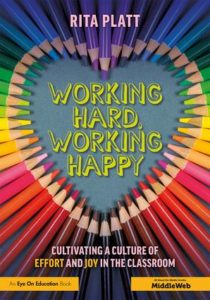

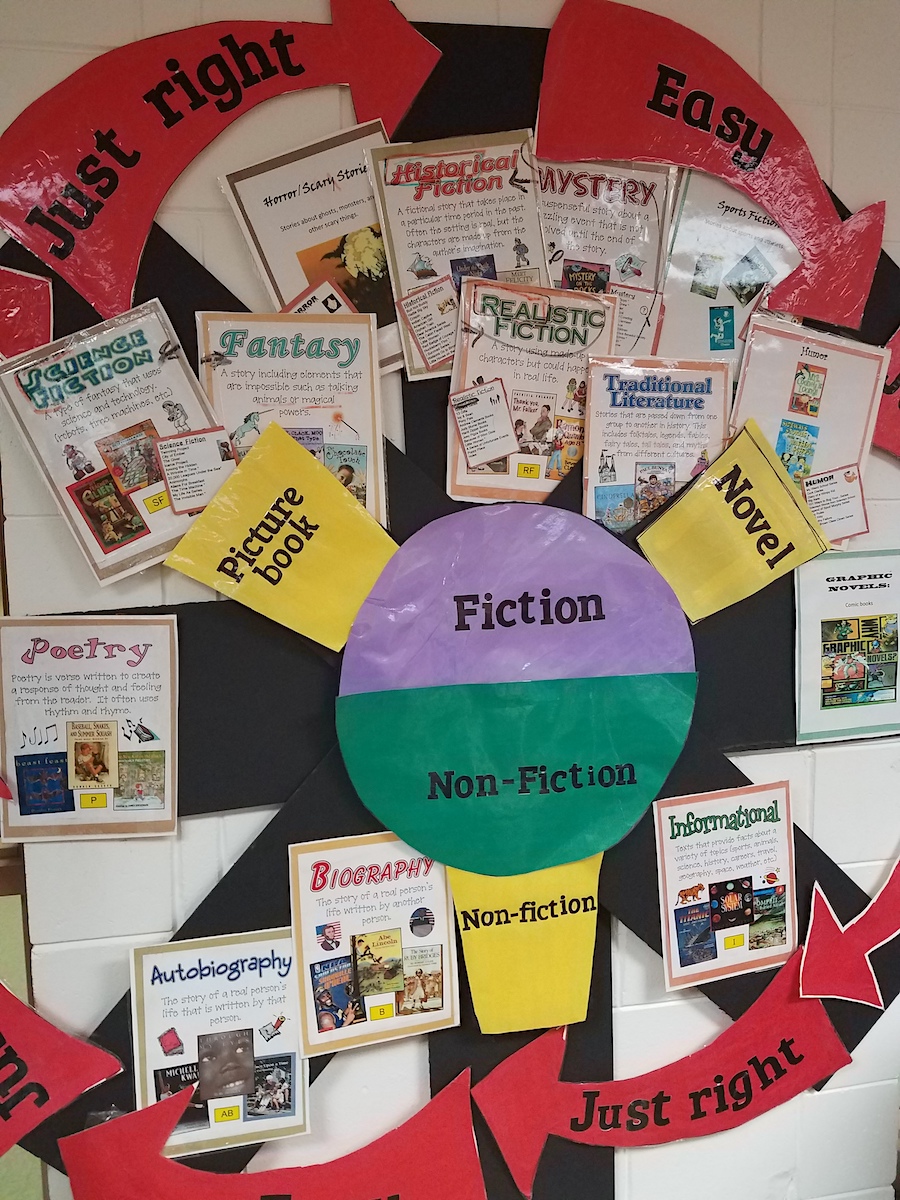
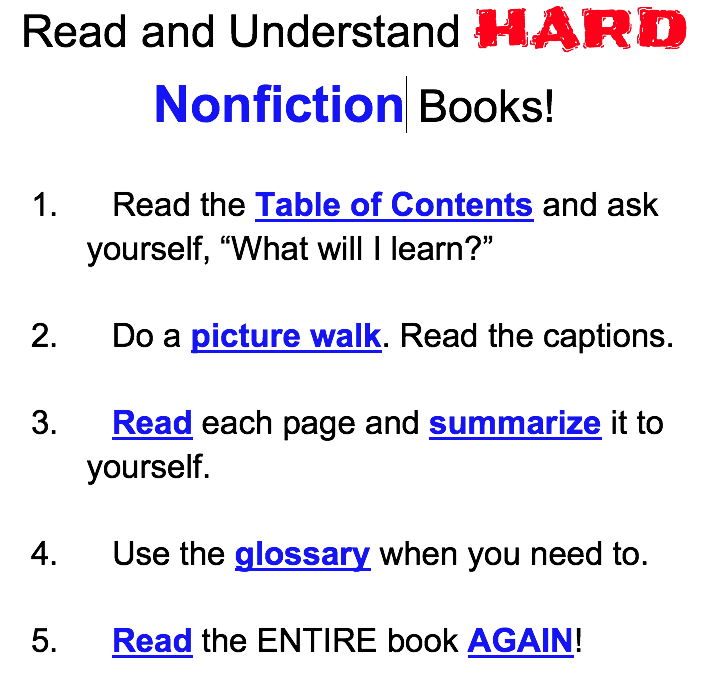


































Rita,
I truly believe that this is why we do so well on the state test and report card each year. Our students are reading a lot of non-fiction books which gets them ready for the state test and being able to navigate through hard unfamiliar text. It’s not the subject matter but the strategies to read the text and complete the task either on the state test or our students daily work.
I agree, Penny! I think that’s a big part of why our kiddos are so successful. Thanks for the comment!
Terrific article!
One important point: the just right/easy; just right/hard chant is just plain fun to say!
So true! I love to make it a rap, sing it in the blues, twang it out to country, head bang it, and make it FUN!